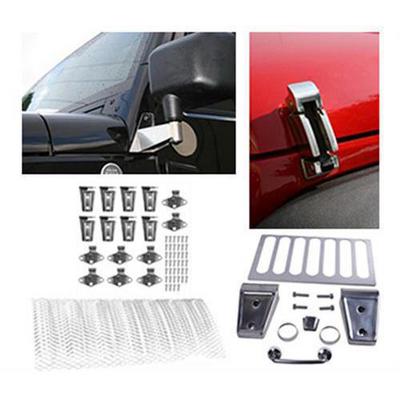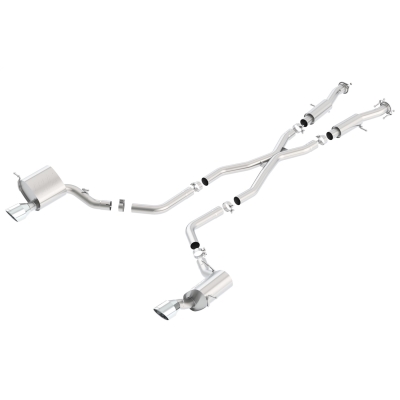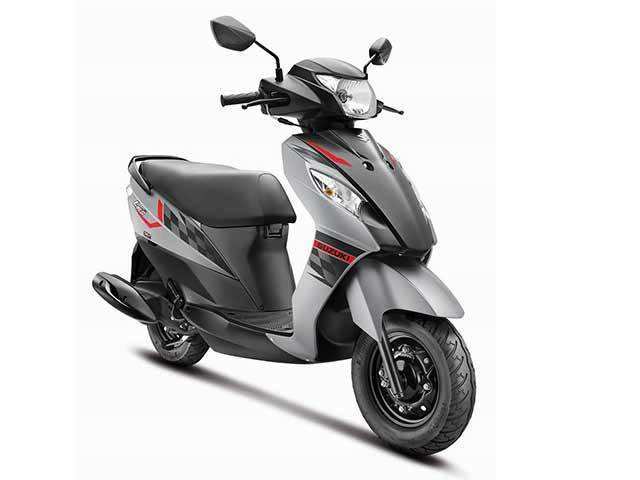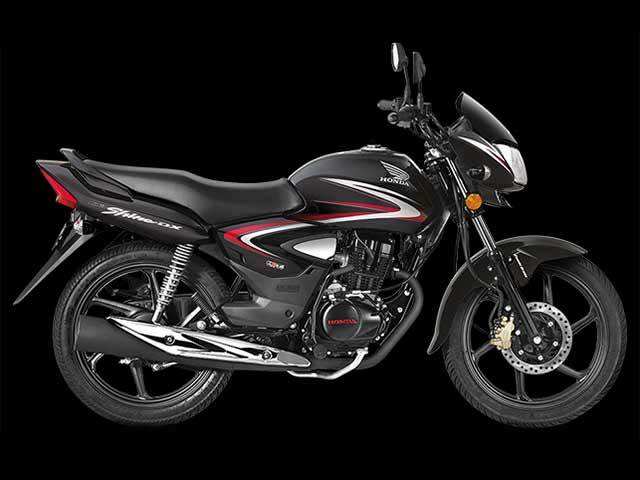
The
understanding of the different Bike mechanism is an important aspect
for a rider to be more familiar with the bike and get adjusting to the
different aspect of the Bike.
Lets Look at the different mechanism of a Bike :
1. Working of Engine and Valve :
The are two types of engine commonly used in Motorbikes. They are Two Stroke Engine and Four stroke Engine.
Both
the Engines comes under the banner of “Internal Combustion (IC)
Engine”. In the two stroke engine, the working cycle is completed in two
strokes of tyhe piston or one revolution of the crankshaft. This is
achieved by carrying out the suction and compression processes in one
stroke (or more precisely in inward stroke), expansion and exhaust
prrocess in the second stroke (or more precisely in outward stroke).
In
a four stroke engine, the working cycle is completed in four strokes of
the piston or two revolutions of the crankshaft. This is achieved by
carrying out suction, compression, expansion and exhaust processes in
each stroke. The four stroke Petrol Engine Cycle also known as Otto
Cycle requires four strokes of operation in the engine cylinder. The
four strokes of a petrol engine sucking fuel-air mixture (petrol mixed
with proportionate quantity of air in the carburettor known as charge)
are described below.
* Suction or Charge Stroke : In this
stroke, the inlet valve opens and pure air is sucked into the cylinder
as piston moves downwards from the Top dead centre (TDC). It continues
till the piston reaches its Bottom dead centre (BDC).
*
Compression Stroke : In this stroke, both the valves are closed and the
air is compressed as the piston moves upwards from the BDC to TDC. As a
result of compression, pressure and temperature of the air increases
considerably. This compleytes one revolution of the crank shaft.
*
Expansion or Working Stroke : Shortly after the piston reaches the TDC
(during the compression stroke), fuel oil is injected in the form of
very fine spray into the engine cylinder, through the nozzle, known as
fuel injection valve. At this moment, temperature of the compressed air
is sufficiently high to ignite the fuel. It suddenly increases the
pressure and temperature of the products of combustion. The fuel oil
continuously injected for a fraction of the revolution. The fuel oil is
assumed to be burnt at constant pressure. Due to increased pressure, the
piston is pushed down with a great force. The hot burnt gases expand
due to high speed of the piston. During this expansion, some of the heat
energy is transformed into mechanical work. It may be noted that during
this working stroke, both the valves are closed and the piston moves
from TDC to BDC.
* Exhaust Stroke : In this stroke, the exhaust
valve is open as the piston moves from BDC to TDC. This movement of the
piston pushes out the products of the combustion from the engine
cylinder through the exhaust valve into the atmosphere. Thjis completes
the cycle and the engine cylinder is ready to suck the fresh air again.
It
will be interesting to know that from the thermodynamic point of view,
there is no difference between two-stroke and four-stroke cycle engine.
The difference is purely mechanical.
Today all the major IC Engines of the world are running on the four stroke cycle.
2. The Transmission :
The
engine converts the explosive energy to mechanical energy, through the
reciprocating motion to rotary motion. The power developed from rotary
motion is controlled by various systems in a bike. This system is known
as the Transmission.The Transmission consists of the clutch, gear-box
& final-drive chain all the way upto the to driving wheel.
The
clutch is a very important “Link” in the transmission of the bike. Its
primary use is to allow the rider to engage and disengage the engine
from the wheels. It also takes up most of the load and vibrations from
the engine and does not allow it to pass onto the rest of the
transmission.
After the clutch comes the gear-box. As the name
suggests, a box having set of gears. It allows the rider to use the
optimum amount of power from the engine as and how required. The main
function of the gear-box is to reduce strain on the engine by supplying
efficient power at required time. For Instance, the first gear is lowest
and most sensitive gear, which helps in moving of a stationary bike
without putting excessive load on the engine. On the other hand use of
second gear requires relatively more acceleration and gives more strain
on the engine and clutch. A lower gear serves two purposes. They serve
as brake and also improve acceleration when required. For instance,
while going downhill on a lower gear provides “Braking Power” and during
uphill provides extra power.
The power transmission is by means
of two chains. The primary chain is enclosed in the clutch case on the
L.H.S. of the bike and runs in an oil-bath. The final or drive chain
connects the gear-box to the drive-sprocket of the rear wheel. The
drive-sprocket is coupled with the brake drum, which in turn is fit into
the rear hub. There are 4 rubber blocks fitted between the
drive-sprocket/brake-drum and the hub of the rear wheel, which act as
efficient dampers, absorbing practically all the shocks of power and
transmission units and have a very favorable influence on the life of
chain as well as vital engine parts.
3. The Electricals :
The
main components of an electrical system in the bike are the Battery,
Alternator/Dynamo/ Generator/Magneto and Ignition/High-Tension Coil(s).
The main function of the system is to provide ignition in the form of a
spark to the compressed air+fuel mixture in the cylinder. A battery
provides either 6 volts or 12 volts current. But a voltage thousands
times higher is needed to create a spark from the spark plug, which can
ignite the air+fuel mixture. It’s the high tension coil (Ignition coil)
which boosts low voltage current of the battery and provides upto 30,000
volts to the spark plug. A small spark is generated at the distributor,
which is converted to a high voltage current, which flows to the spark
plug and finally ignites the air+fuel mixture. A contact breaker and
rotor, inside the distributor, ensure correct sequence of current to the
plug while a condenser attached to the contact breaker serves as a
capacitor that minimizes the damage to the contact breaker.Another part,
which is at the heart of the electrical system is the
Alternator/Dynamo/Generator/ Magneto. This provides a charge to the
battery by generating a current. As the generator output increases with
the engine speed a control unit (Cut-out/Regulator) is provided to
regulate the output. This unit prevents the damage to the generator unit
and protects the battery from over charging/discharging. The stored
energy of battery is used for different purposes such as: ignition,
horn, lights etc….
To retain the standard energy of the battery
it needs periodical maintenance like check up of specific gravity,
cleaning of terminals, applying a thin film of petroleum jelly or pure
Vaseline (not grease) to keep terminals and connections from corrosion
and sulphation etc…
4. Brakes :
There are two different types of
brakes used in bikes, namely: Drum Brakes & Disk Brakes.The Drum
Brake has an aluminum/steel/iron drum to which the wheel is attached.
The drum and wheel rotate together. The brake shoe plate is bolted on to
the chassis and inside the drum lie the brake shoes, which have brake
liners on them. The brake liners are either riveted or moulded onto the
brake shoes.
When the brake pedal is depressed, a cam (placed
between the brake shoes) rotates such that the brake shoes move towards
the drum. When the brake shoes grip the rotating drum, the rotating
wheel locks/stops.
The Disk Brake has a metal disk instead of a
drum fitted to the wheel and the calipers are bolted on to the
chassis/shock-absorber pipe. The calipers have pistons and brake pads.
The disk brake has to be operated hydraulically. The brake fluid and the
actuating cylinder (brake-oil sump) are fitted on the handle bar of the
bike. When the brake lever is pressed a non return brake valve operates
and sends the brake fluids to the caliper and the piston, the caliper
operates thereby forcing the brake pads to move towards the disk and
produce the friction which allows you to slow down or stop.
The usual arrangement on a good bike is front disk brake and rear drum brake.
5. Suspension System :
The
Front suspension consists of a telescopic fork with hydraulic dampers.
It is the straight slider type with two cylindrical coil springs. Steel
cover tubes protect the suspension elements.The rear suspension operates
on a circular path. The pivoted rear swing arm is sprung by two
cylindrical coil springs and fitted with hydraulic dampers. The
suspension dampers are protected by chromium plated steel covers.
6. The Wheels and Tyres :
The
Tyres have two functions. First, they are air-filled cushions that
absorb most of the shocks caused by riding on bad roads. Therefore they
reduce the effect of the shocks. Second, the tyres grip the road to
provide good traction; Good traction enables the bike to accelerate,
brake and make turns without skidding.There are two types of tyres
available, the inner tube type and the tubeless type.
In the
inner tube type tyre, both the tube and tyre are mounted on the rim. The
tube is like a hollow rubber doughnut. It is inflated with air after it
is installed inside the tyre and the tyre is put on the wheel rim. The
inflation causes the tyre to resist any change of shape.
The
tubeless type tyre does not have an inner tube. Instead, the tubeless
tire is directly mounted on the wheel rim so that the air is retained
between the rim and the tyre.































